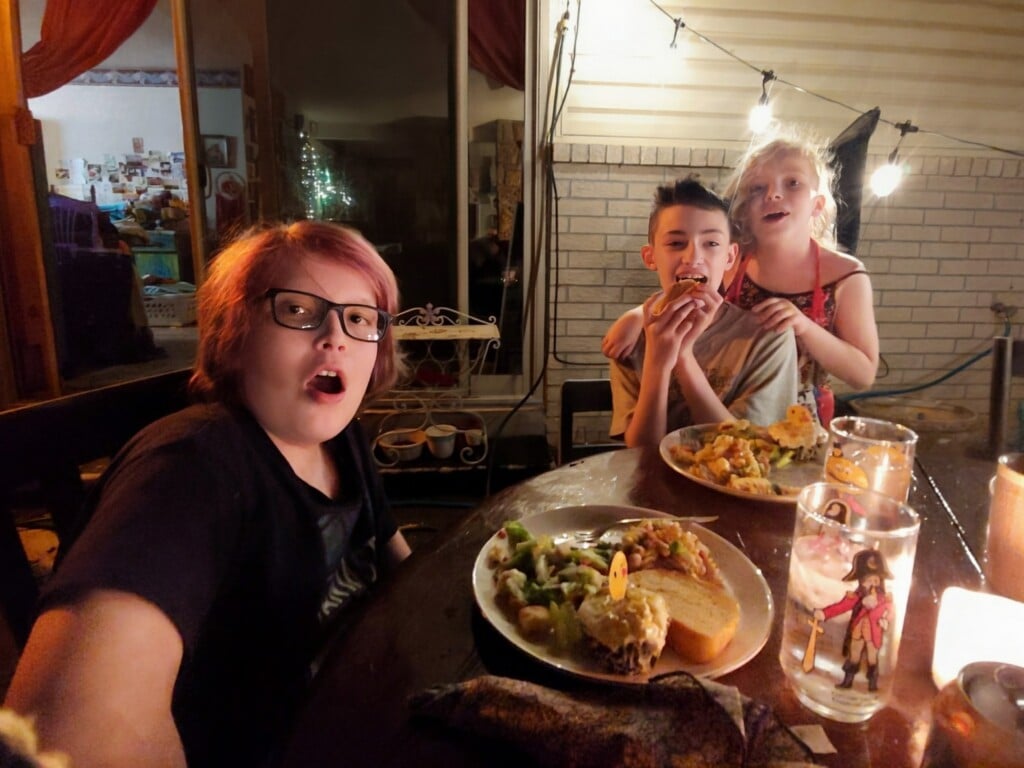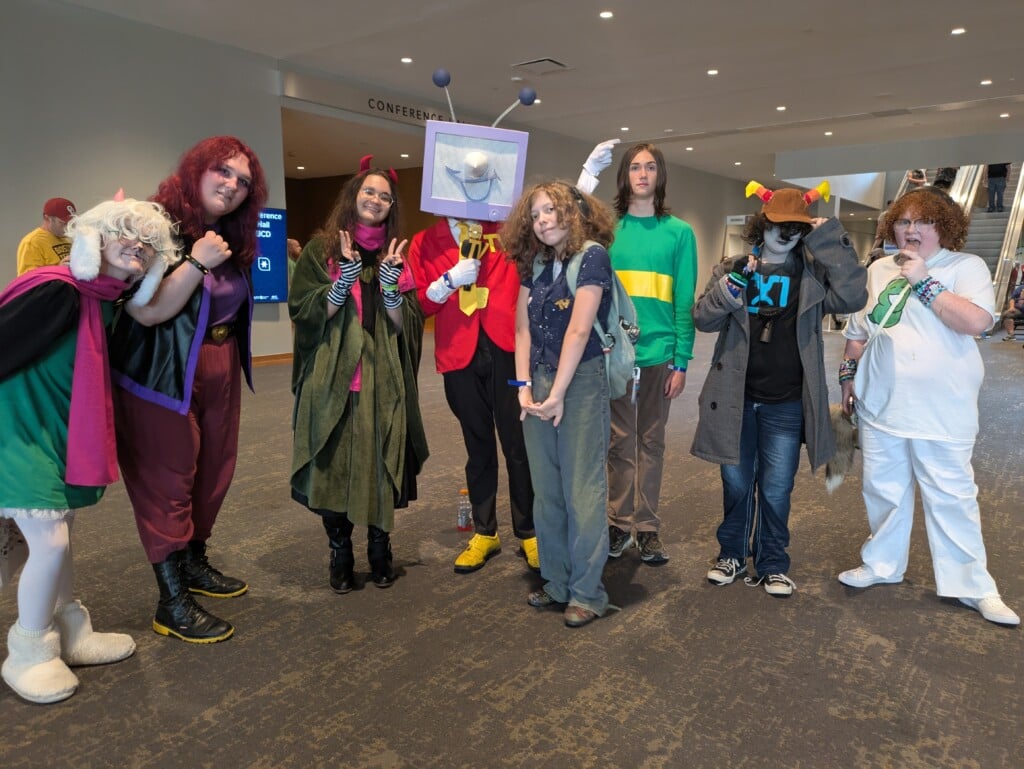The Curse of Neurotypical Passing Autism

As a parent in a 100 percent neurodivergent family, I am still processing the trauma of trying to grocery shop with my three young kids when the mere experience of walking through a store could send us to meltdown city. The audDHD (ADHD and autistic) child would start to stim — that is, hit his arms, legs, and any available body part against the shopping cart so he could feel his body in space. Presumably from a mix of pure boredom, terrible impulse control, and general frustration with the overall situation, the middle child (now diagnosed ADHD) would react by dipping into his “I’m not touching you” repertoire from the Big Book of Screwing With People.
The youngest, whose diagnosis today includes Generalized Anxiety Disorder (GAD) but we believe may also have undiagnosed ADHD like her brothers, would then have a full-blown meltdown and go boneless in defiance, just flopping down on the ground in dead weight daring us to escalate the situation by trying to move her or, heaven forbid, force her into a car seat.
For a while there, things were rough — like really rough. There was a several-year period where I just didn’t take the kids on unnecessary shopping trips without my husband present because my own neurospicy self genuinely could not handle it.
I don’t say this to complain about my kids or about life as a the parent of a neurodivergent crew but rather to emphasize that we simply weren’t ready for public appearances for a while there, and so we stuck close to home until I could learn the parenting techniques I needed to manage the chaos and the kids were just a little bit older.
Back in those days, it was very obvious to everyone around us that our oldest was on the spectrum. He had a characteristic “autism accent” — that is, a particular tempo and cadence to his speech that made it pretty obvious he wasn’t neurotypical. Besides the stimming, he also had other very stereotypical autism traits like lining up toys and cars, hyperfocusing on one thing for a very long time, trouble making eye contact, and often, serious meltdowns. At one point, he struggled so badly to make it through class that his third grade teacher gave him a refrigerator box to sit in at the back of the room when he got overwhelmed.
Today, he’s almost 18 and a senior in high school. And thanks to his own years of hard work and a team of counselors at both CREOKS and Family and Children’s Services — not to mention the incredible support of our friends and family — Noah is a neurotypical passing autistic person most of the time.
I don’t say that to in any way suggest that it’s better to be neurotypical passing but rather to emphasize that he has put in a ton of work on his own to be able to make eye contact, to self-regulate, and to work on his social relationships.
But while Noah no longer appears autistic on the outside — at least, to most folks — he still very much is autistic. That will never change. He’ll never stop being autistic.
Despite his very neurotypical appearance, Noah still experiences very rigid thinking, for example. He has a sense of humor and enjoys sarcasm, but he often takes other people literally and speaks in a highly literal way. He is also prone to selective muteness and shutdowns.
I’m sharing this because it’s something Noah wants people to understand about autism: Just because there are a lot of media stereotypes about what people think autism should look like doesn’t mean that’s what it actually does look like.
And it’s precisely because he seems so neurotypical to so many people, particularly teachers and school admins — that Noah and other kids like him — especially twice-exceptional kids — experience regular discrimination.
Take these statements from two school faculty from just this past month as part of their reasoning why Noah’s autism should not be taken into account in a disciplinary matter regarding something he said but did not realize was offensive to a neurotypical mind:
- From one of Noah’s favorite, most trusted teachers: “Noah seems very smart for an autistic person.”
Our response: Noah is very smart, and his autism is beside the point. Lots of highly intelligent people are autistic — that doesn’t mean they don’t struggle with processing information in a neurotypical way or, as in Noah’s case, process information in a much more literal way than neurotypical people.
- From a school counselor who should have been made aware of Noah’s IEP but was not and refused to consider the role of his autism: “I work with Noah all the time. He doesn’t seem autistic to me.”
Our response: If you’re a high school counselor who doesn’t understand that autism doesn’t always look a certain way, that’s a failure of your training and the education system as a whole. Full stop.
The public school system, particularly Tulsa Public Schools, is seriously failing neurodivergent kids despite, I’m told, putting teachers through all sorts of professional development.
I don’t understand where the breakdown is happening, but I do know that there are systemic problems in the school system’s approach to neurodiversity that begin and end with the dichotomization of disabilities. Students who are visibly disabled are segregated and heavily pressured to mainstream, while invisibly disabled students who manage to make it in mainstream classes are treated like neurotypical kids with disciplinary issues. They’re often placed on “behavior plans” and stigmatized for things like speaking literally in class or being unable to sit still and focus in a traditional classroom setting.
The one thing we want every educator, parent, and community member to understand is that someone can look and seem neurotypical either because they’re just really good at neurotypical passing mannerisms or they’re masking. And in many cases, the signs are actually all right there, but the observer doesn’t understand enough about neurodiversity to know what they are looking for.
We don’t know what we don’t know, but now that you’ve been told, it’s time to get out there and learn more about neurotypical passing autistic folks and some of their very unique needs, particularly their communication needs.
Kaelynn Partlow, an autistic woman who appeared on Netflix’s Love on the Spectrum, has a ton of great information on what life is like for autistic folks with various levels of speech and needs. I recommend everyone who wants to learn about autism spend some time on her YouTube channel where she talks about topics like literal thinking,”invisible autism,” and making assumptions about what autistic people mean when they speak.
While it’s true that autism and other neurospiciness can make life a little trickier in a neurotypical world, having different kinds of thinkers around us can also make life much more interesting. Embracing the beauty of neurodiversity in the human experience starts with taking those first steps to understand what other folks are experiencing by centering their stories and voices.
Do you have an experience with invisible neurodiversity leading to misunderstandings? Let me know in the comments. Thanks for reading, and have a fabulous week in your little nebula!











